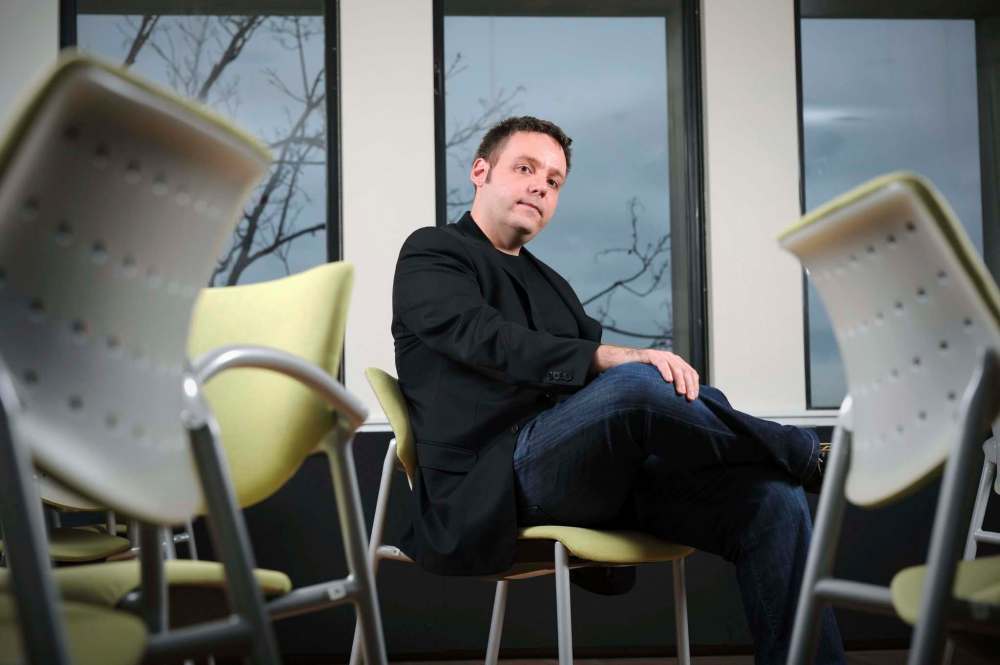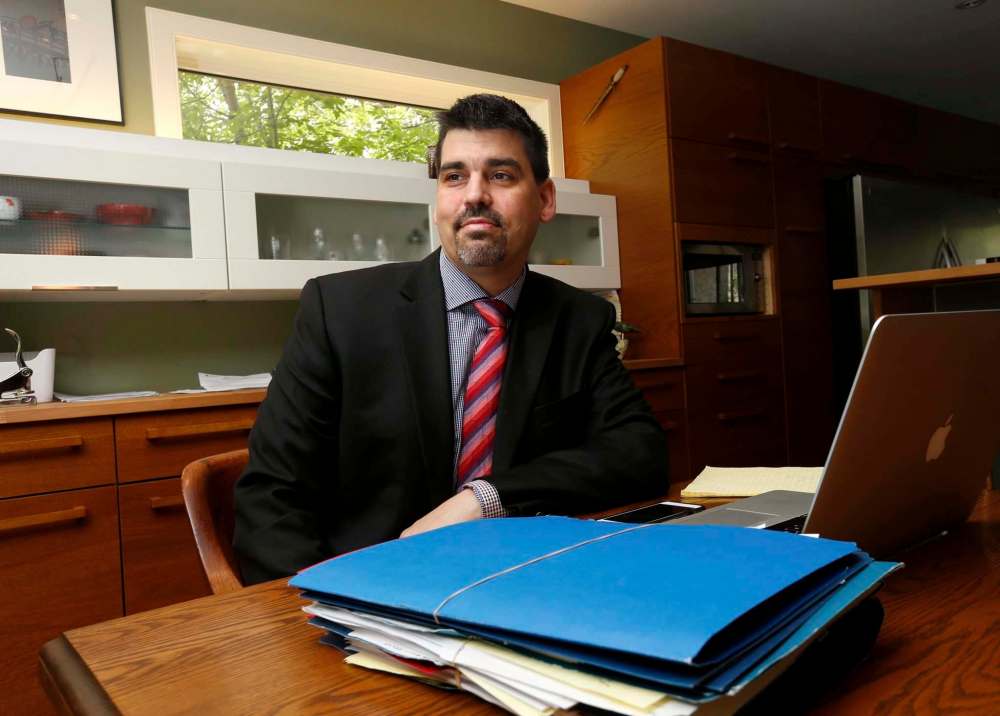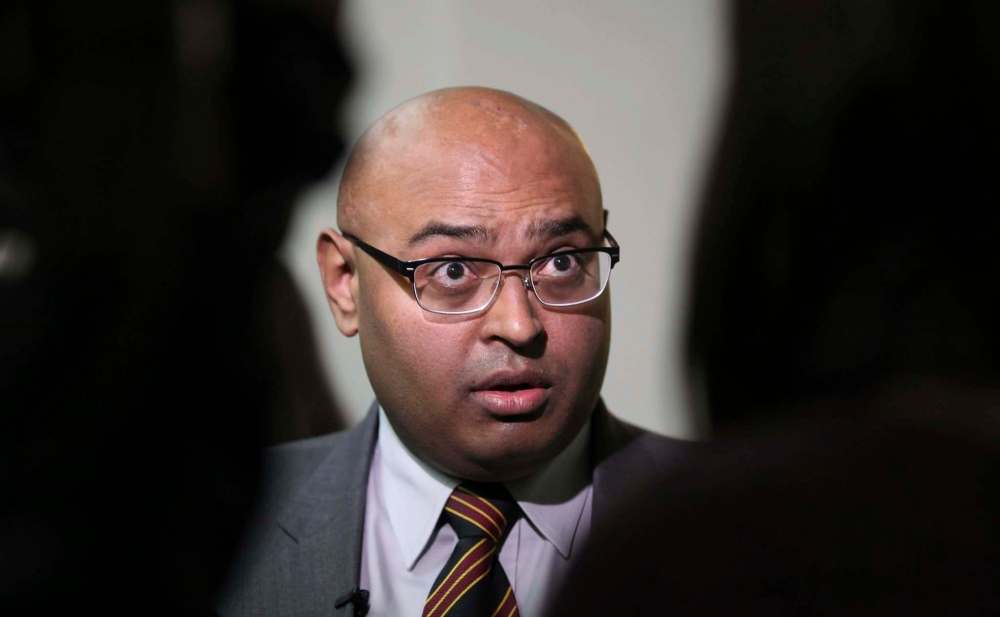After the border
Immigration experts say there's no reason to fear 'back door' migrants
Advertisement
Read this article for free:
or
Already have an account? Log in here »
To continue reading, please subscribe:
Monthly Digital Subscription
$19 $0 for the first 4 weeks*
- Enjoy unlimited reading on winnipegfreepress.com
- Read the E-Edition, our digital replica newspaper
- Access News Break, our award-winning app
- Play interactive puzzles
*No charge for 4 weeks then billed as $19 every four weeks (new subscribers and qualified returning subscribers only). Cancel anytime.
Read unlimited articles for free today:
or
Already have an account? Log in here »
Hey there, time traveller!
This article was published 23/02/2017 (2608 days ago), so information in it may no longer be current.
Concerns that asylum seekers streaming across the border into Canada could represent a security threat to the country might be understandable, but are not valid, says a law professor who has studied the results of refugee claimants.
That stereotype only serves to create racial tension, said Sean Rehaag, associate professor at Osgoode Hall Law School at York University in Toronto.
“You need to be very cautious about assertions that particular groups are more of a risk of security or criminality than other groups,” Rehaag said in an interview. “Almost any study suggests that criminality is less of a concern among recent newcomers than the settled population.”
Besides, Rehaag said, the first act of those who would threaten harm to the country or its citizens — upon setting foot on Canadian soil — would probably not be volunteering to be arrested and questioned by immigration authorities. They are neither trying to sneak in or remain undetected.
“If I’m a terrorist and I want to come into Canada to cause trouble, I don’t come in this way,” he said. “I’m exposing myself to screening. There are lots of very easy ways to get into the country if you’ve got a little money, enough to purchase most documents, that would allow you to escape scrutiny entirely.”
Results of the claims for refugee status suggest that walking across the border is not a free pass for permanent residency in Canada.
In 2015, 63 per cent of all claims by Somali asylum seekers — who represent the majority who have been crossing into Canada near Emerson recently — were successful (187 approved of 315), statistics published for the Canadian Council for Refugees show.
That figure is slightly less than the overall average (64.7 per cent) for claims.
Rehaag said the reasons for negative application results include, among others:
● Failed to establish identity or nationality.
● Lack of credibility.
● Fear of persecution not well-founded.
● State protection against persecution is available.
● Excluded from refugee protection due to serious criminality.
Winnipeg immigration lawyer Alastair Clarke also disputed the notion the country’s security is being put at risk by allowing asylum seekers — whether they enter the country legally or not.
“There’s no evidence of that at all,” Clarke said. “As far as I’m concerned, the rhetoric that the refugee claimants who are crossing the border pose security risk or national risk is unfounded. And generally speaking, any reports that point fingers of potential security risks… turn out to be unfounded or grossly exaggerated.”

Another immigration and refugee lawyer said he understands how some Canadians might be unnerved by migrants walking across the border and appearing to be accepted.
“I think it’s a natural human emotion to be afraid of something you don’t know, if you’ve got people walking in under the cover of darkness at night,” said Bashir Khan, who has dealt with more than 100 cases of asylum seekers during the last five years.
But, Khan noted, it’s equally common for societies to single out minorities as targets in times of anxiety over safety, such as putting Canadian citizens of Japanese descent in internment camps during the Second World War.
“Doesn’t every society pick on its most weak and marginalized?” he asked. “It’s very easy to pick on refugee claimants and have this fear that these are all criminals and Canada’s national security is under threat.
“Look, a prisoner at Stony Mountain or Headingley is more enfranchised and has more rights than a refugee claimant who is already battered and spent nine months or 22 months in a U.S. detention facility for no crime, other than they were escaping persecution in their country. And they didn’t get a fair hearing (in the U.S.) and now they’re coming to Canada for protection. And there are some people who just like to scapegoat and pick on them.
“But I don’t think the majority of people feel that way.”

Rehaag said one solution that would address the safety concerns of both Canadian citizens and the asylum seekers would be to immediately suspend the Safe Third Country Agreement. That would allow refugee claimants to simply present themselves at the Canadian border.
The agreement, signed in 2002, requires refugees to make an asylum claim in the first possible country they reach.
Under the agreement, Canada is unable to consider asylum for anyone who enters from the U.S., which is deemed a safe country in which to apply for asylum.
Hence trespassing the border, which triggers a claim process — unless an asylum seeker is rejected at the border by Canadian Border Agency officers upon initial screening.
Rehaag is one of 240 Canadian law professors who have signed a petition calling for the federal government to suspend the agreement, arguing the United States is no longer a safe place for refugees under the current “chaos” of the immigration file under the Trump administration.
It’s a “really bad idea” for asylum seekers to enter Canada “irregularly” if they can’t be punished, Rehaag said, noting it puts the health and safety of the migrants at risk.
“It’s bad for the refugees, but it’s also bad for border security,” he said. “I think it’s encouraging the creation of human smuggling networks to help people get to and across the border. And the experience in other countries is that once those networks become entrenched — it may start with refugee claimants but eventually those networks begin to move other things.”
Other things, such as guns and drugs.
Rehaag said there is a provision that allows the federal government to suspend the agreement for three months. However, Immigration Minister Amhed Hussen said this week the Trudeau government has no plans to amend or suspend the agreement.
But Rehaag said the reality is that word is getting out to a large number of possible asylum seekers — news of the Emerson crossings have been broadcast globally — that there is a back door along the world’s longest undefended border.
“Canada doesn’t have a lawful means of stopping people from coming into the country,” he said. “The question is not whether we want people to come here, the question is how do we want them to come here. Do we want them to come where it’s safe, that allows for orderly processing, or do we want them to be traipsing across farmers’ fields?”
Rehaag understands anxiety created by an influx of migrants, by legal or illegal means. But he called for perspective.
Canadians should remember the number of claimants is lower than recent historical averages — from fewer than 25,000 in 2016 to more than 40,000 in the 1990s. Canada’s numbers are only a fraction compared with countries such as Germany, Jordan, Turkey and Greece. “They’re hosting hundreds and hundreds of thousands of refugees (mostly Syrians),” he said.
randy.turner@freepress.mb.ca
Twitter: @randyturner15

Randy Turner
Reporter
Randy Turner spent much of his journalistic career on the road. A lot of roads. Dirt roads, snow-packed roads, U.S. interstates and foreign highways. In other words, he got a lot of kilometres on the odometer, if you know what we mean.




